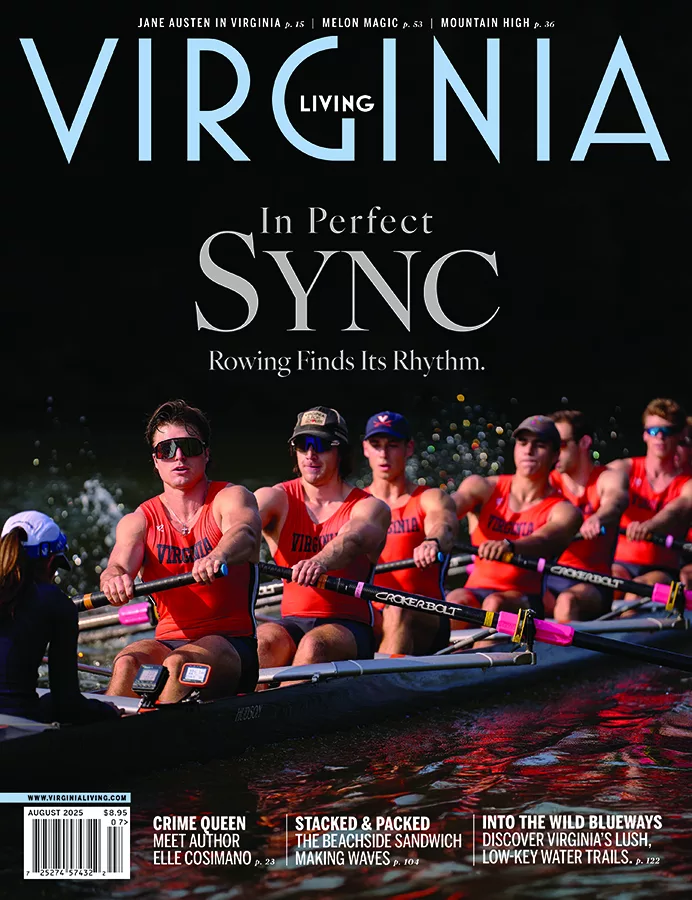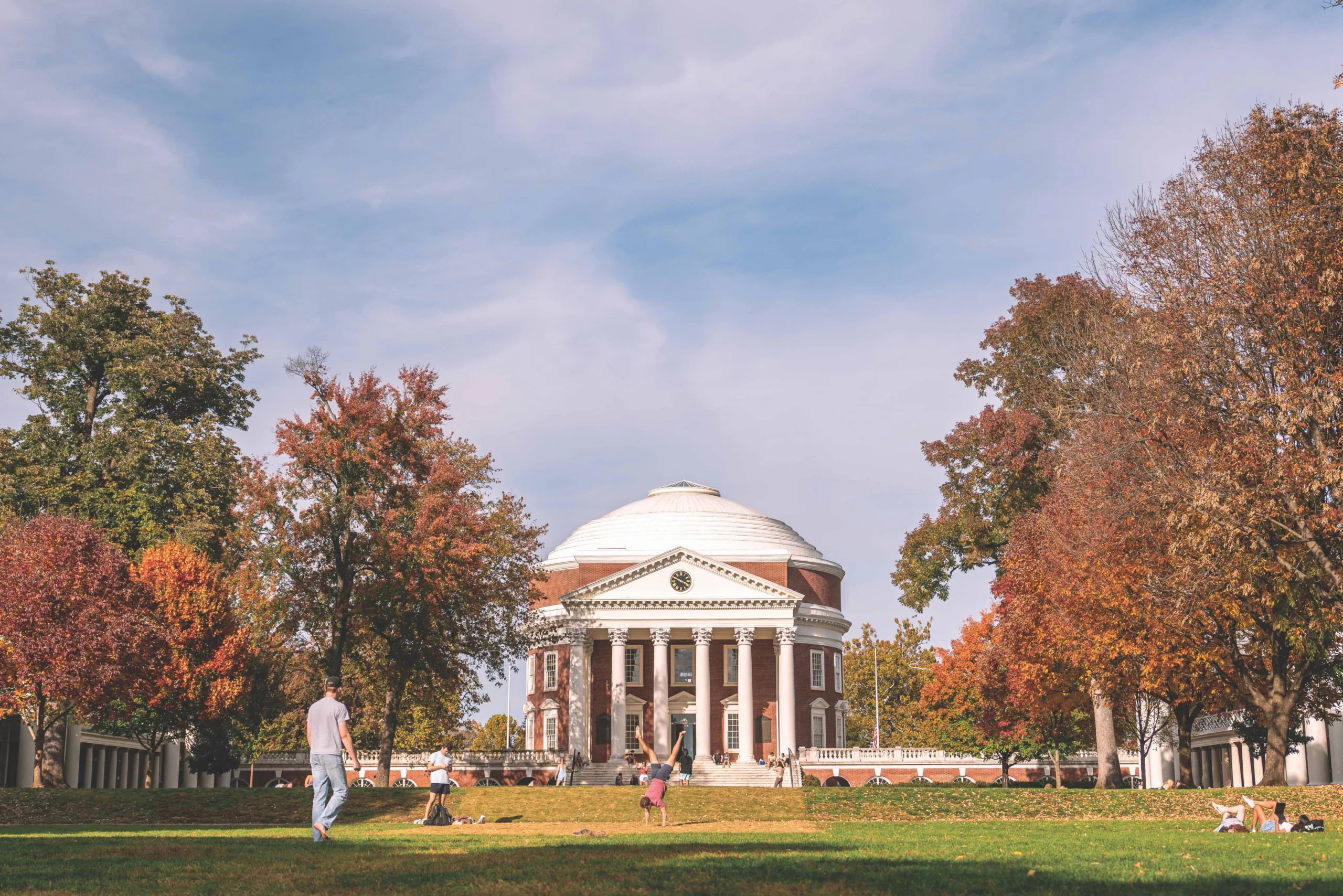Within earshot of fife and drum, Christina Ball samples the fare at two of Williamsburg’s most popular eateries. “Oh, for a bowl of fat canary, rich Palermo, sparkling sherry…”

Beyond the Tavern – Feature
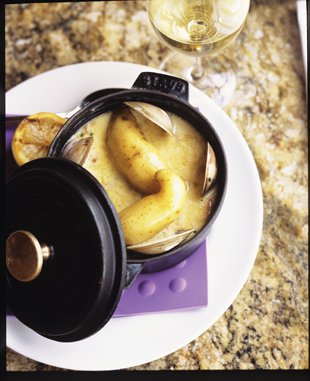
Beyond the Tavern 5
Creamy clam chowder with Littleneck clams, smoked bacon and fingerling potatoes.
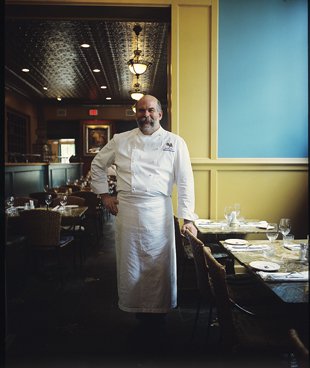
Beyond the Tavern 4
Executive Chef David Everett
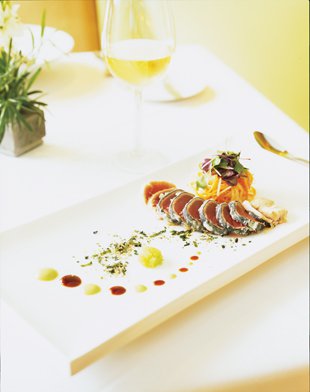
Beyond the Tavern 3
Tuna tempura with daikon salad, soy and wasabi.
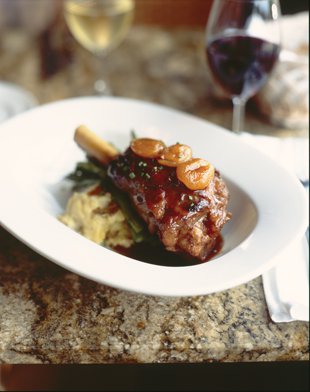
Beyond the Tavern 2
Lamb shank braised in an apricot glaze with crushed potatoes and asparagus.
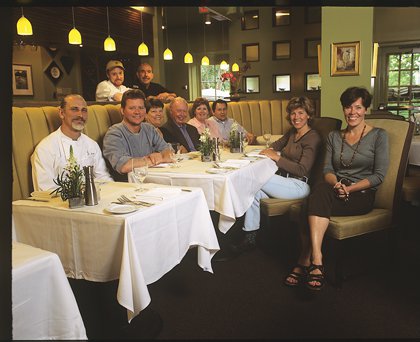
Beyond the Tavern 1
Top row: David Lackey, Steven Flanary. Bottom: Eric Von Gehren, Thomas Power Jr., Mary Ellen Power Sr., Thomas Power Sr., Linda Music, David Ricker, Cathy Power Pattisall, Mary Ellen Power Jr.
With its picket-fenced gardens, lantern-lit paths, horse-and-buggy rides and costumed interpreters who stay in character despite attempts to shake them back to the 21st century, Colonial Williamsburg is one of the most delightful cultural experiences in the history-rich state of Virginia. Its simple, small-village pleasures—including those of the table—offer a welcome respite from the crowds and chaos of big-thrill theme parks such as Busch Gardens and Kings Dominion. Like many visitors over the years, I’ve happily stepped back in time to get a taste of colonial cuisine at Williamsburg’s fine historic taverns: peanut “soupe” and game “pye” at The King’s Arms, flounder Chesapeake and clam stew at Christiana Campbell’s, apple cider punch and ale-potted roast at Shields. But, on a recent trip to the historic triangle at the peak of spring, my craving for something significantly more modern was completely satisfied by a duo of new eateries—both within earshot of fifes and drums.
THE CHEESE SHOP and FAT CANARY
I vividly remembered The Cheese Shop from my previous visit to Williamsburg in 2002. Back then, it was practically the only place to get Camembert, prosciutto and perfectly crusty fresh bread in the charming commercial district known as Merchants Square. Located on the historic area’s main thoroughfare, Duke of Gloucester Street, directly across from the town’s first and still notable fine dining restaurant, The Trellis, this 37-year-old gourmet emporium is simply an ideal spot for breakfast, lunch or anytime picnic provisions. On the late Saturday morning of my visit, the front patio was packed with students, locals and tourists sipping coffee, nibbling on sandwiches and pastries and reading newspapers, maps and guide books.
Any specialty food store is as good as a museum to me. Once inside the recently revamped and expanded shop, I lingered longingly over the merchandise beautifully displayed on shelves and tables—chocolates, oils and vinegars, dried fruits and nuts, a dazzling array of Italian products, a global gathering of cookies and crackers and, just downstairs, a 4,000-bottle retail wine cellar. My friend Lisa and I would buy a baguette, samples of several cheeses, a slender salami and some dried pears and enjoy a snack outside before touring the Colonial gardens in full spring splendor.
Owned and operated by the Power family, The Cheese Shop is a perfect example of how national and family histories converge in the Colonial area. It was at the cheese counter, appropriately enough, where I met the first member of the powerhouse Power family—general manager Cathy Power Pattisall. Despite the crowds buzzing about the shop, she was clearly capable of simultaneously overseeing the scene while also making sure individual shoppers got all of their questions answered. Cathy’s sister, Mary Ellen Jr., works with her at The Cheese Shop, while their brother, executive chef Thomas Power Jr., dazzles diners at his restaurant, Fat Canary, which shares 9,000 square feet of culinary showcase space with the shop and wine cellar.
The apples certainly don’t fall far from the tree in this family. Parents Tom and Mary Ellen Sr. opened the doors of their then tiny, now vast cheese shop on Prince George Street back in 1971. Eight years later, these pioneers of contemporary Williamsburg food and dining launched their enduring restaurant, The Trellis, which they eventually sold to then-partners Marcel Desaulniers and John Curtis, in 1994. In 2003, The Cheese Shop moved into the sleek new digs on Duke of Gloucester, together with the brand-new bistro.
When I returned, with an appetite, to Fat Canary later that evening for dinner, pulling up a stool at the polished concrete bar next to a French woman and her college-aged son, I was somehow not surprised to find most of the Power family gathered for dinner, too. After greeting guests and checking on details here and there, Tom and Mary Ellen Sr. joined Cathy and her husband at a table in the back of the intimate, art deco-esque, Randall Kipp-designed interior: columns and ceiling painted avocado green, upholstered chairs and banquettes, a sweeping wood-framed bar and display kitchen, white tablecloths on impeccably set tables.
Since the restaurant takes its name from a poetic reference to the wine imported to the colonies from the Canary Isles (“Oh, for a bowl of fat canary, rich Palermo, sparkling sherry …”), I had a feeling the wine-by-the-glass list would reach beyond the typical chardonnay and Shiraz. My instincts were smack-on—the Canary boasts 15 wines by the glass, many from small, boutique wineries, all available by the glass or quartino (250ml). I ordered a glass of Dr. Konstantin Frank dry Riesling from New York and leaned slightly to the right in order to more easily inhale the intoxicating aromas coming from my French neighbor’s Thai coconut curry soup with chunks of halibut. (It’s always a good sign when a French person—as I discovered over the course of the evening—is a regular at an American restaurant.)
Literally growing up in the food business, Tom Power Jr. graduated from the top-notch Culinary Institute of America in Hyde Park and brings to his own restaurant 14 years of cooking experience in kitchens as diverse and distant as the Ritz Carlton in Laguna Niguel, California, Roy’s in Maui and The Blue Point in Duck, North Carolina. In refreshing contrast to the heartier fare of Colonial taverns (especially on a warm day), Power’s cuisine combines Asian, European and American flavors and local ingredients—seafood, produce—in a fresh, exciting and artfully presented way. My sashimi-like tuna tempura appetizer (a special) was remarkably delicate, with crisp, barely fried seaweed around tender bites of tuna, arranged in a swirl of ponzu, microgreens and a wasabi zing. A salad of house-pulled mozzarella was equally light and zesty, with little spirals of Virginia ham and a mound of tiny cauliflower florets, grilled leeks and olives in a smoked red-onion herb vinaigrette.
My neighbor confirmed that her pan-seared sea scallops—on a bed of farro (an ancient Roman grain), Brussels sprouts, bacon and roasted tomato—were as flavorful and texture-right as they looked. But I definitely didn’t regret my own entrée order: savory pieces of grilled free-range chicken, plump pillows of sage gnocchi, bright green rapini and tiny bits of crisp pancetta in a rich, nutty broth. It was like spring in a bowl. In the spirit of conviviality and culinary exploration that seems to characterize Fat Canary (and The Cheese Shop), I shared my dessert sampler with my new dining companions at the bar—dark chocolate cherry cake, macadamia nut pie, warm cinnamon walnut cake with spiced rum butterscotch.
After just one dinner at the Canary, I can see why this AAA Four Diamond winner has succeeded in charming locals and visitors alike—it’s sophisticated, world-class contemporary dining that hasn’t strayed an inch from the warmth and integrity of the family tree.
BLUE TALON BISTRO
I added a second night to my Williamsburg stay in order to experience another new Colonial-area eatery: the Blue Talon Bistro. Conveniently located on Prince George Street, just across from my room at the charming, locally owned Fife and Drum Inn, the Blue Talon has developed a reputation for impeccable French and American “comfort” cuisine and stellar service since opening in the fall of 2004. I know more than a few foodies who drive all the way from Charlottesville just to dine at the Talon, and I guess I’m a member of that club now, too.
Chef-owner David Everett has been wowing diners in the Williamsburg area for years—namely, at The Dining Room at Ford’s Colony, an AAA Five Diamond winner for nine consecutive years. At the Blue Talon, Everett and his partner, veteran manager and wine expert Adam Steely, have created a restaurant that achieves that magic balance between the fine and the familiar, the classic and the contemporary, the local hangout and the destination eatery. Whereas Fat Canary’s name is wine-inspired, this bistro’s moniker refers to France’s highly prized breed of chicken—poulet de Bresse—that butchers display with their blue feet still on as a guarantee of quality. “It’s our way of saying that a chicken is not just a chicken,” Steely says. In other words, even the simplest and most classic dishes, like those on the Talon’s lunch, brunch and dinner menus—mussels in white wine, meatloaf, rotisserie chicken, croque madame, Niçoise salad—can reach stellar heights with the right ingredients, preparation and presentation.
Though it looks like a tiny, one-room café from the façade, the Blue Talon’s completely remodeled (by Everett’s wife, designer Kathryn Tawes) interior is as open and airy as a Van Gogh wheat field under a pale blue Provençal sky. The main dining room features high, pressed-tin ceilings, a long zinc bar, whimsical, poultry-themed art and windows offering a glimpse of the kitchen’s capped chefs and shiny copper pots. Lisa and I were escorted back to one of two light-filled dining rooms in the back. Just about every table was taken by a delightfully diverse group of diners—college students, families with young children, couples of all ages and a few out-of-towners like us. We ordered a bottle of pinot noir and two perfectly contrasted starters: a classic charcuterie board (shaved cured ham, sliced sausages, a quickly emptied terrine of paté, cornichons and little pots of mustard and chutney) and a vivid salad of shaved fennel and green apples with hints of ricotta salata and mustard dressing.
Eager to indulge in a classic, I ordered the plat du jour: an enormous, incredibly tender filet mignon steak drizzled with smooth, tangy Béarnaise sauce. The bistro’s other daily specials not only provided a sense of the kitchen’s range, but also made me want to extend my stay a day or two longer: coq au vin with mushrooms and strips of thick bacon; a cassoulet of braised white beans, duck confit, pork and Toulouse sausage; curried goat stew; and the slightly more Southern shrimp and polenta.
Like any good friend would do, I helped Lisa polish off her apricot-glazed lamb shank, and then we ordered cups of strong and steaming Illy coffee and a beautiful chocolate and orange curd tart for dessert. What better way to walk off two days of contemporary indulgences than with a long, lantern-lit walk through the Colonial streets of this timelessly tranquil Virginia village.
(Originally published in the August 2008 Issue)
